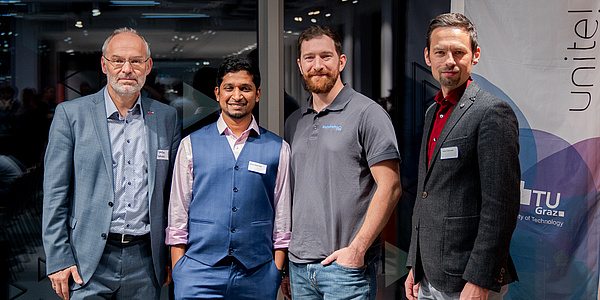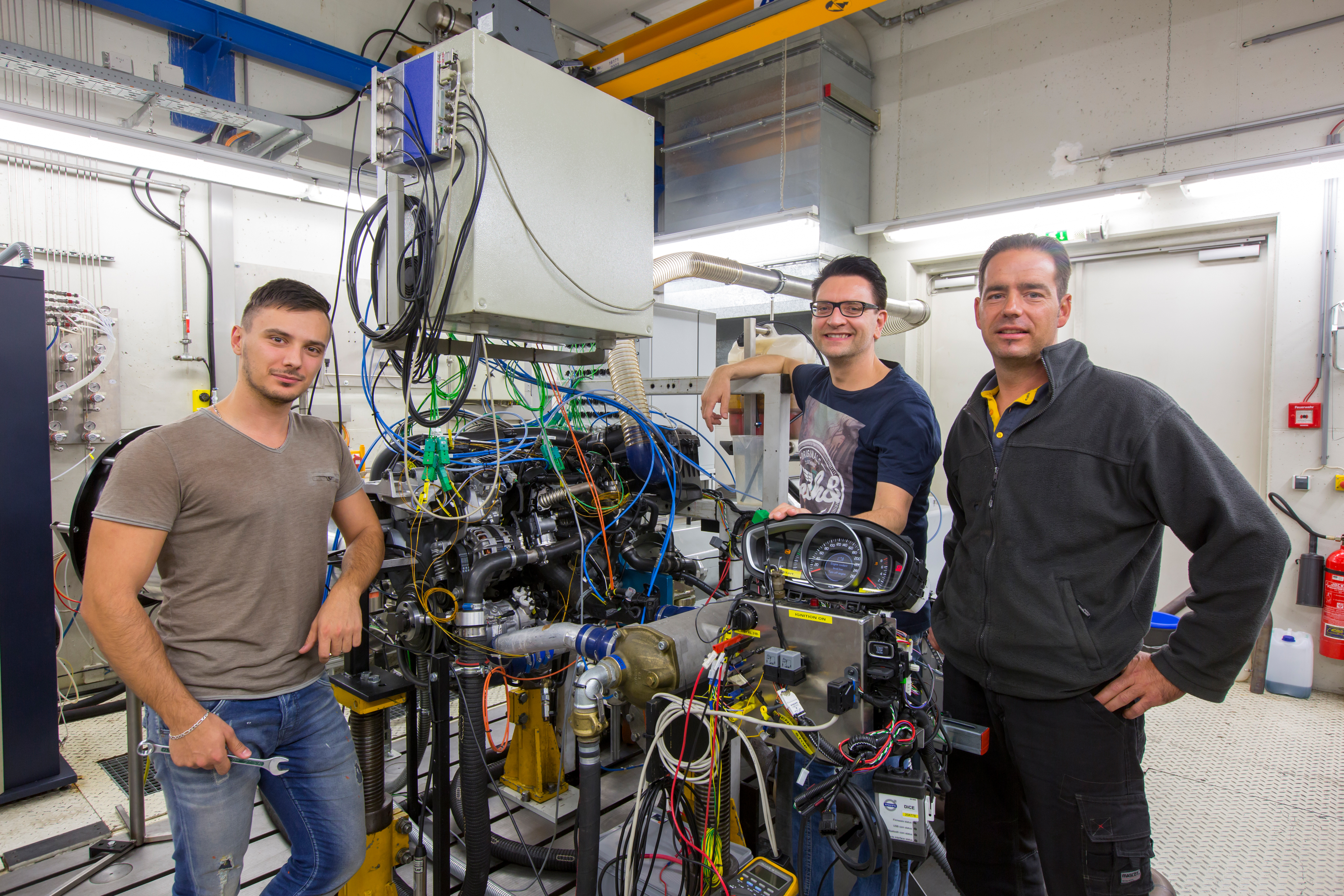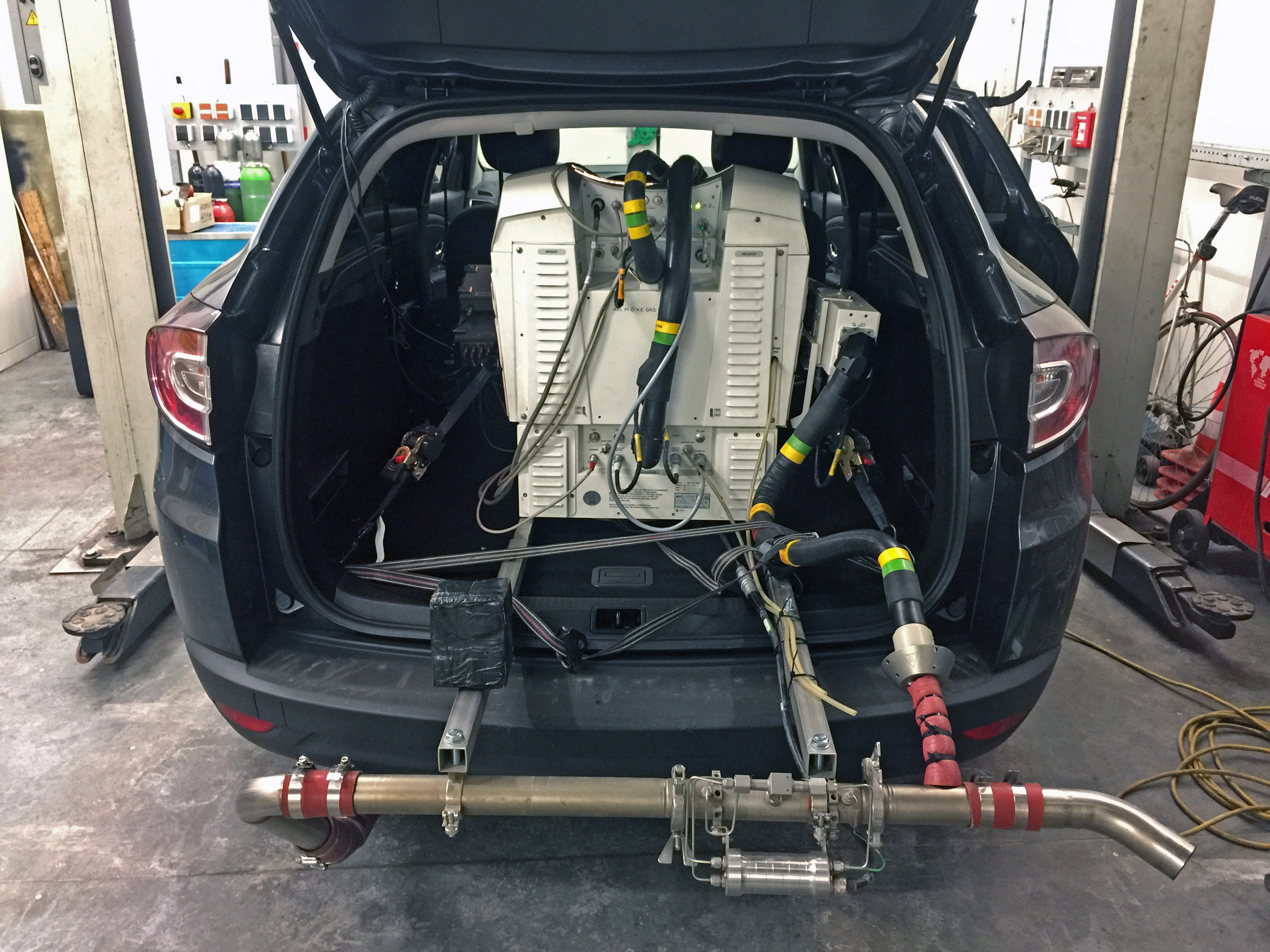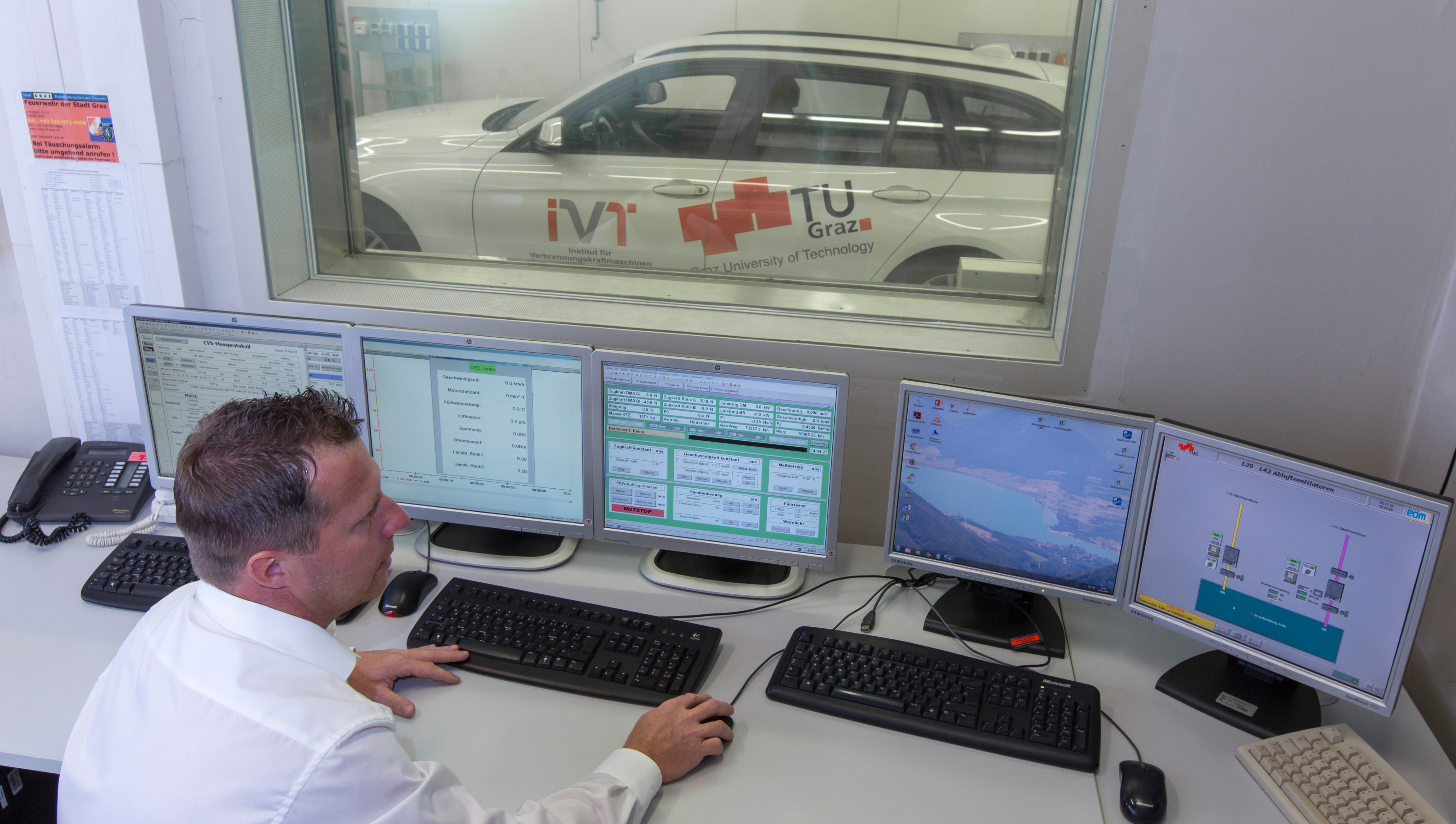Exhaust gas after-treatment for diesel vehicles: Amminex, TU Graz and partners garner EU award worth millions
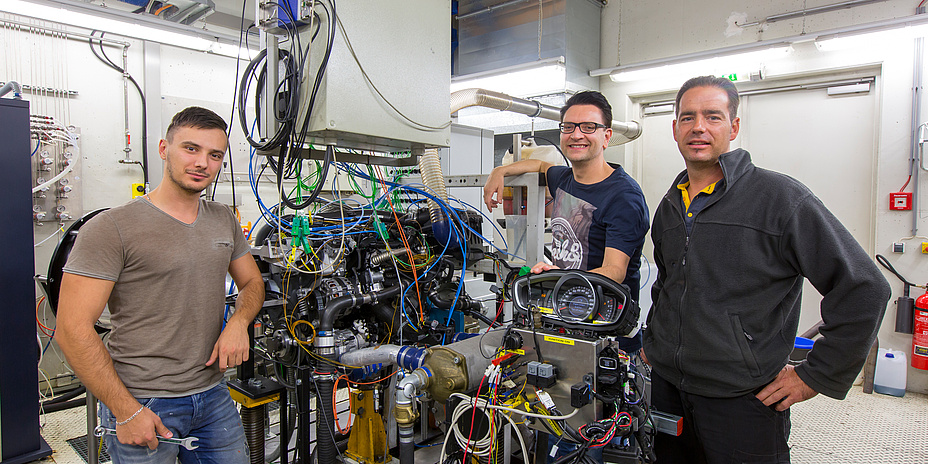
Definite reduction of damaging emissions
The ASDS technology – short for ammonia storage and delivery system – has been developed by the Amminex company, a company of the French Faurecia concern. The technology makes use of ammonia which is chemically stored in a salt and released through heat to reduce the NOx emissions using selective catalytic reduction (SCR). In contrast to the usual liquid urea-water solution, better known as AdBlue®, a gaseous reduction agent is used in the prizewinning process. This ensures a better NOx conversion in cold and static driving conditions. In the development, a Euro-5 diesel vehicle was retrofitted with the ASDS technology by Amminex and combined with an SCR catalyst from Johnson Matthey and tested under real driving conditions. The harmful emissions of the retrofitted vehicle were determined in a series of tests at TU Graz. The results are impressive, as Peter Grabner from TU Graz’s <link https: www.ivt.tugraz.at _blank int-link-external external link in new>Institute of Internal Combustion Engines and Thermodynamics explains: ‘Our measures in test operation with a Euro-5 vehicle showed a reduction of NOx emissions under real driving conditions under the Euro-6 threshold level, and a reduction of 95 per cent compared to the base vehicle. The innovative concept offers great potential to make vehicles more environmentally friendly and to comply with future exhaust standards.’ This technology solution was developed by the Amminex company originally for the commercial vehicle market and is already being employed in a number of urban bus fleets in Copenhagen, London and Korea. The presented ASDS system for passenger cars is a prototype which is currently only being employed in internal tests. Together with automotive manufacturers, it is now intended to carry out work on further developing, standardising and industrialising this retrofit solution, and to push ahead with the authorisation of this technology subject to future rules and provisions for diesel vehicles.EU millions for the environment
The European Union was visibly impressed by this technology innovation and recently awarded the 1.5-million-euro Horizon 2020 prize of the EU Commission in the category ‘Engine Retrofit for Clean Air’ to the consortium, which is composed of lead company Amminex Emissions Technology, the <link https: www.ivt.tugraz.at _blank int-link-external external link in new>Institute of Internal Combustion Engines and Thermodynamics of TU Graz, Johnson Matthey PLC and the International Council on Clean Transportation Europe. The share of the prize money for TU Graz lies at around one third. This prize promotes the development of new technologies which can be applied in existing drivetrains. The objective is to reduce harmful emissions under real driving conditions to the lowest possible level, thus improving urban air quality.This research project is anchored in the Field of Expertise „<link https: www.tugraz.at en tu-graz services news-stories planet-research foe-mobility-production _blank int-link-external external link in new>Mobility & Production“ one of five strategic research FoE of TU Graz.
Visit <link https: www.tugraz.at en tu-graz services news-stories planet-research current-articles _blank int-link-external external link in new>Planet research for more research related news.
Kontakt
Dipl.-Ing. Dr.techn.
TU Graz | Institute of Internal Combustion Engines and Thermodynamics
Inffeldgasse 19/III, 8010 Graz
Phone.: +43 316 873 30030
Email: <link int-link-mail window for sending>grabner@ivt.tugraz.at


